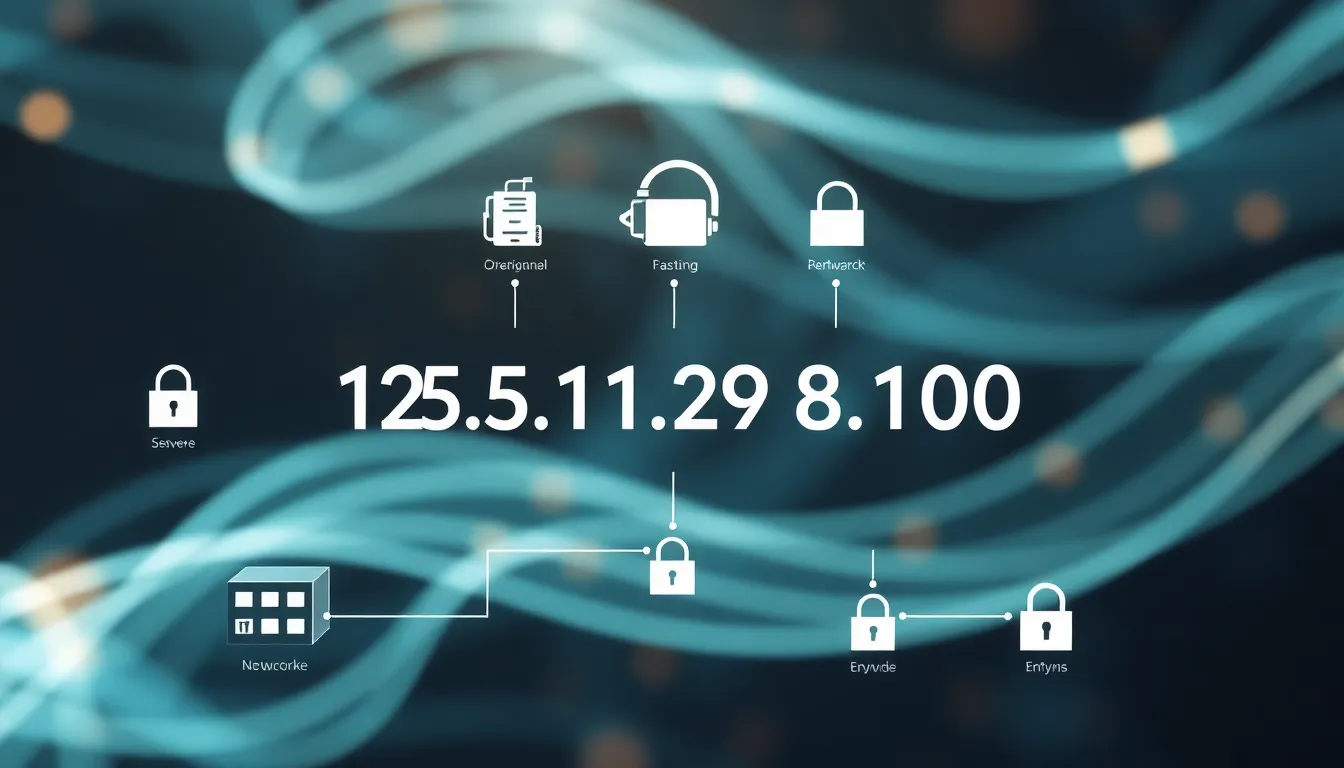In a world where IP addresses reign supreme, the mysterious code “125.16.12.98.1100” stands out like a unicorn at a horse race. It’s not just a random string of numbers; it’s a gateway to understanding the digital landscape that surrounds us. Whether you’re a tech whiz or someone who still thinks Wi-Fi is a type of tea, this article will unravel the secrets behind this enigmatic address.
Table of Contents
ToggleOverview of 125.16.12.98.1100
125.16.12.98.1100 represents an atypical format of an IP address. Commonly, IP addresses consist of four octets, each ranging from 0 to 255. The format seen here extends beyond standard naming conventions.
Analyzing the components reveals that 125 signifies the first octet, identifying its classification. This specific octet falls into the category of public IP addresses. Digging deeper, the second octet, 16, further narrows down the address’s operational scope.
The presence of 12 in the third octet indicates potential geographical allocation or subnetting. Such details are paramount for network administrators. Finally, 98.1100 as the concluding octet deviates from typical structure. Its unusual length could introduce complications in network configurations.
Determining the exact usage of 125.16.12.98.1100 requires further investigation into routing configurations and ownership. Networks worldwide leverage similar numeric patterns for various functions. Specific analysis tools allow for reverse IP lookups, revealing hostnames or associated domains.
Engaging users relies on comprehending these number structures. Digital service providers often manage ranges of IP addresses that encompass valid and future potential uses. Through careful evaluation, one may extract valuable insights into network behavior and traffic patterns linked to this address.
Features of 125.16.12.98.1100

The IP address 125.16.12.98.1100 possesses various features that play a critical role in its operation and usage within digital networks.
Security Aspects
Security measures around 125.16.12.98.1100 are vital due to its classification as a public IP address. Public addresses are more vulnerable to cyber threats, making firewalls essential for protection. Monitoring network traffic proves crucial, as it helps identify malicious activities. Additionally, IP address tracking tools assist in maintaining the integrity of operations. Implementing encryption protocols strengthens data security, safeguarding sensitive information from unauthorized access. Network administrators often conduct regular audits of access logs to ensure compliance with security policies.
Performance Metrics
Performance metrics for 125.16.12.98.1100 indicate its effectiveness within network communications. Latency often affects user experience, with lower latency resulting in faster response times. Bandwidth utilization defines how much data can be transmitted concurrently, impacting overall network performance. Network uptime is equally critical, as higher uptime percentages lead to more reliable service. It’s essential to monitor these metrics to optimize the performance of applications. Load balancing techniques can enhance responsiveness, distributing network traffic evenly across multiple servers.
User Experience
Understanding the user experience associated with the IP address 125.16.12.98.1100 reveals essential insights into its functionality and potential advantages and disadvantages for network performance.
Pros
Public connectivity stands out as a primary advantage. Users can easily access servers or services hosted on this address. Fast data transfer rates may enhance overall performance, particularly for cloud-based applications. Security features play a crucial role; using firewalls and encryption protocols can significantly reduce vulnerability to cyber threats. Network administrators often appreciate the clear allocation of resources, as precise categorization aids in efficient traffic management. Load balancing techniques also improve responsiveness, distributing traffic evenly to optimize user experience.
Cons
On the downside, increased exposure to cyber threats poses a significant risk. Public IP addresses often attract malicious activities, necessitating robust security measures. Network configuration may become challenging due to the atypical format of 125.16.12.98.1100, as troubleshooting and routing can be complex. Additionally, reliance on effective monitoring can amplify workload demands on IT staff. Regular audits of access logs can become burdensome, particularly for smaller organizations lacking adequate resources. Latency issues could arise in scenarios where bandwidth usage is high, potentially impacting user satisfaction.
Comparison with Similar Models
“125.16.12.98.1100” stands out when compared to standard IP addresses due to its unusual format. Unlike typical addresses, which consist of four octets ranging from 0 to 255, this specific configuration includes a non-standard octet that could complicate network configuration. Similar models often adhere strictly to recognized formats, making them easier to manage within various network environments.
In terms of security, similar public IP addresses face challenges connected to vulnerabilities. Many public IP addresses, like 192.168.1.1 or 10.0.0.1, require firewalls and continuous monitoring. The security measures implemented for “125.16.12.98.1100” must also address potential cyber threats, underscoring the importance of encrypted communications.
Comparing performance metrics reveals that latency and bandwidth utilization can significantly vary across models. Traditional addresses tend to offer more stable performance. By contrast, 125.16.12.98.1100 may experience latency issues during peak bandwidth usage, making monitoring essential for optimization.
User experience also differs substantially among various IP addresses. While many standard addresses provide reliable public connectivity with fast data transfer rates, the unique structure of “125.16.12.98.1100” may create challenges. Network configuration complexities could lead to increased exposure to threats, contrasting sharply with similar models that maintain conventional formats.
Overall, understanding “125.16.12.98.1100” in the context of similar models highlights performance, security, and user experience differentials. Knowledge of these distinctions becomes vital for network administrators who aim to optimize their systems effectively.
Understanding the intricacies of “125.16.12.98.1100” is essential for anyone navigating the digital landscape. Its unique format presents both challenges and opportunities for network administrators. By recognizing its implications for security performance and user experience, they can implement effective strategies to mitigate risks.
Adopting robust security measures and monitoring practices will enhance the overall network performance associated with this address. As technology evolves the importance of grasping these concepts will only grow. Staying informed about such atypical IP addresses ensures better management and optimization of network resources in an increasingly complex digital environment.



